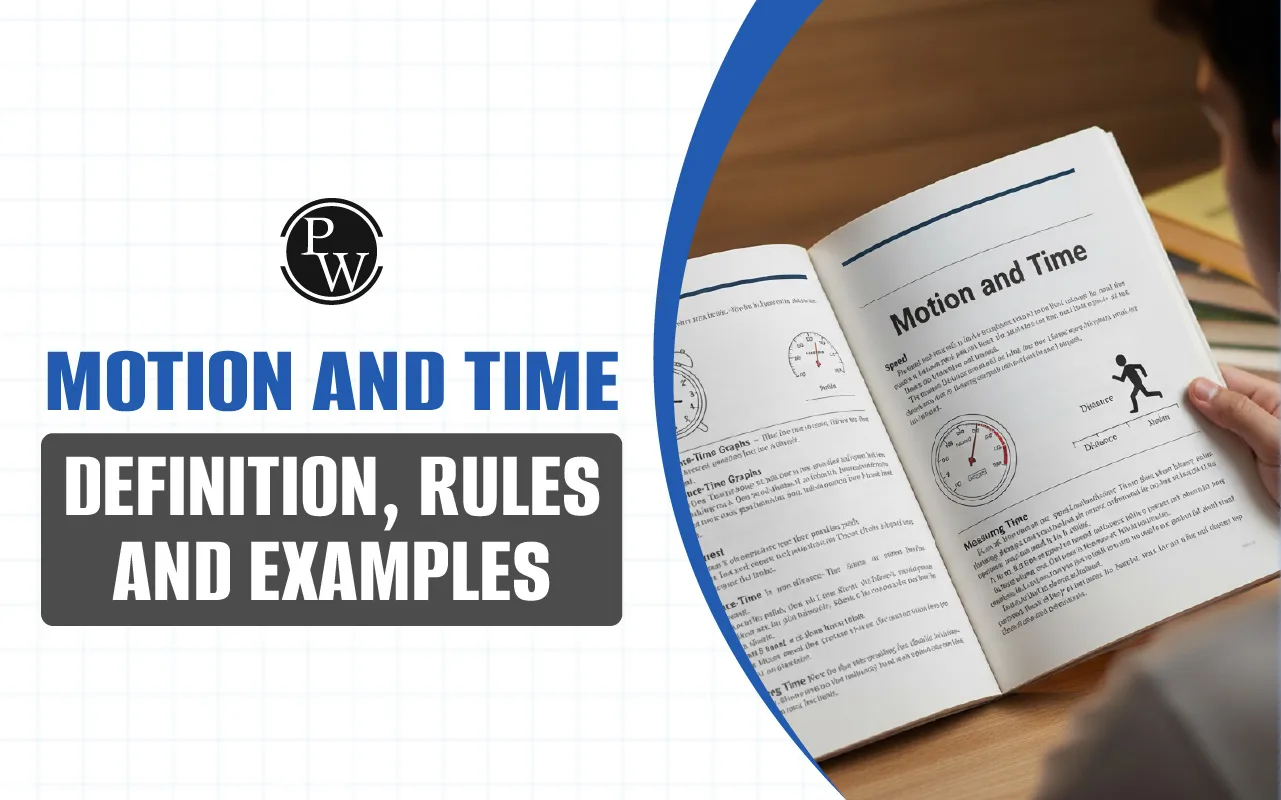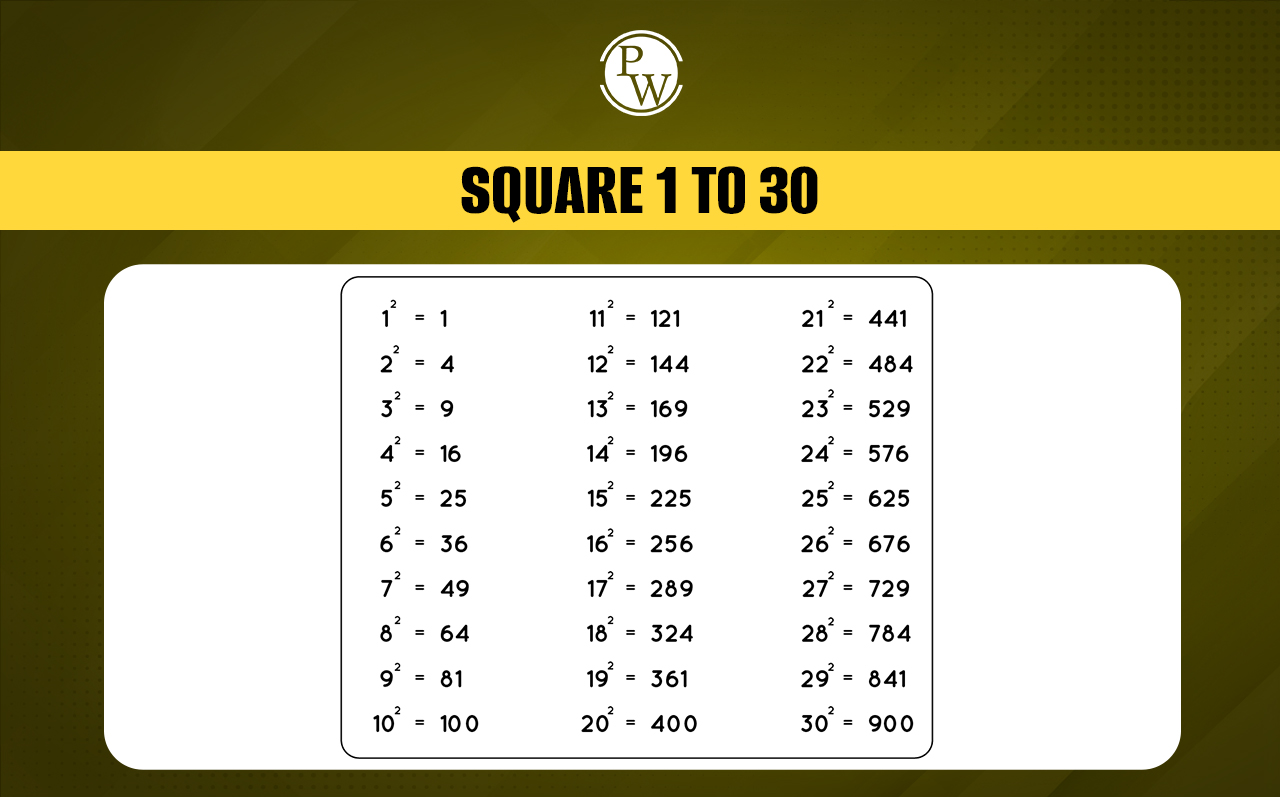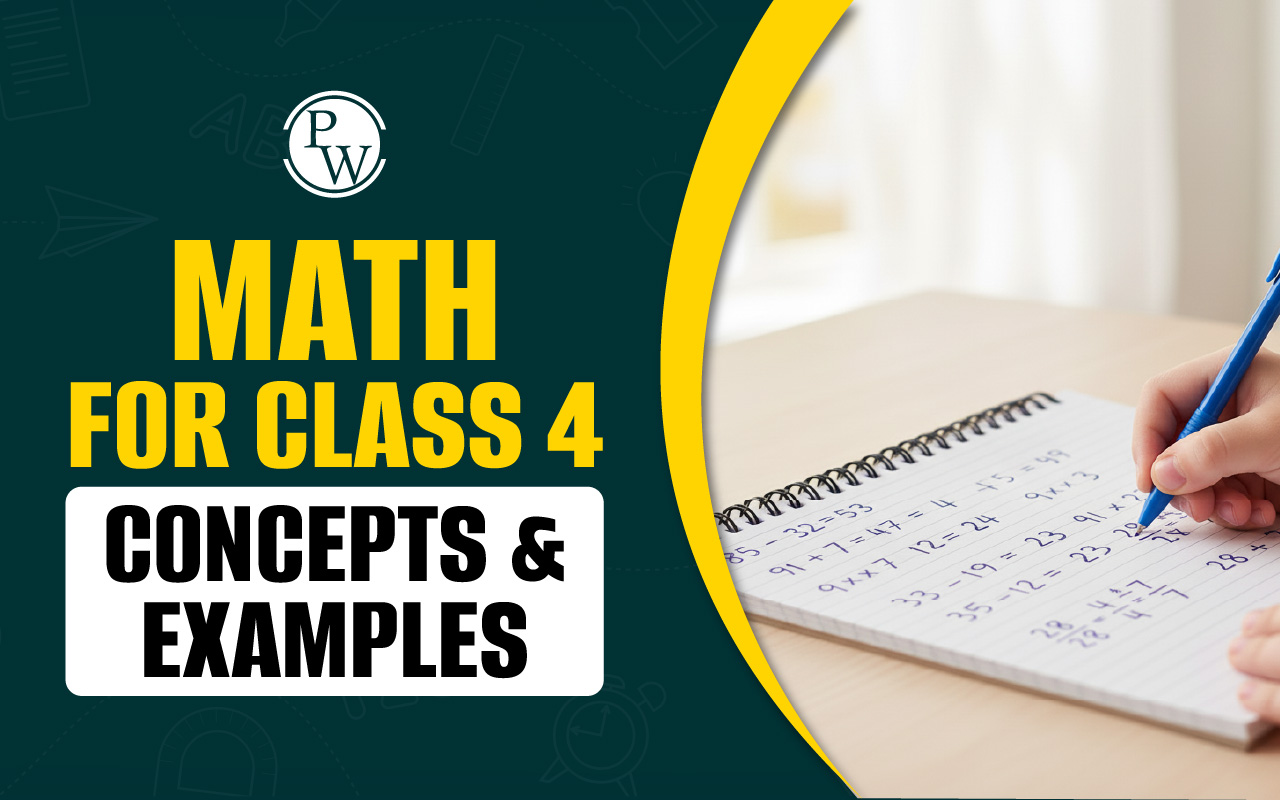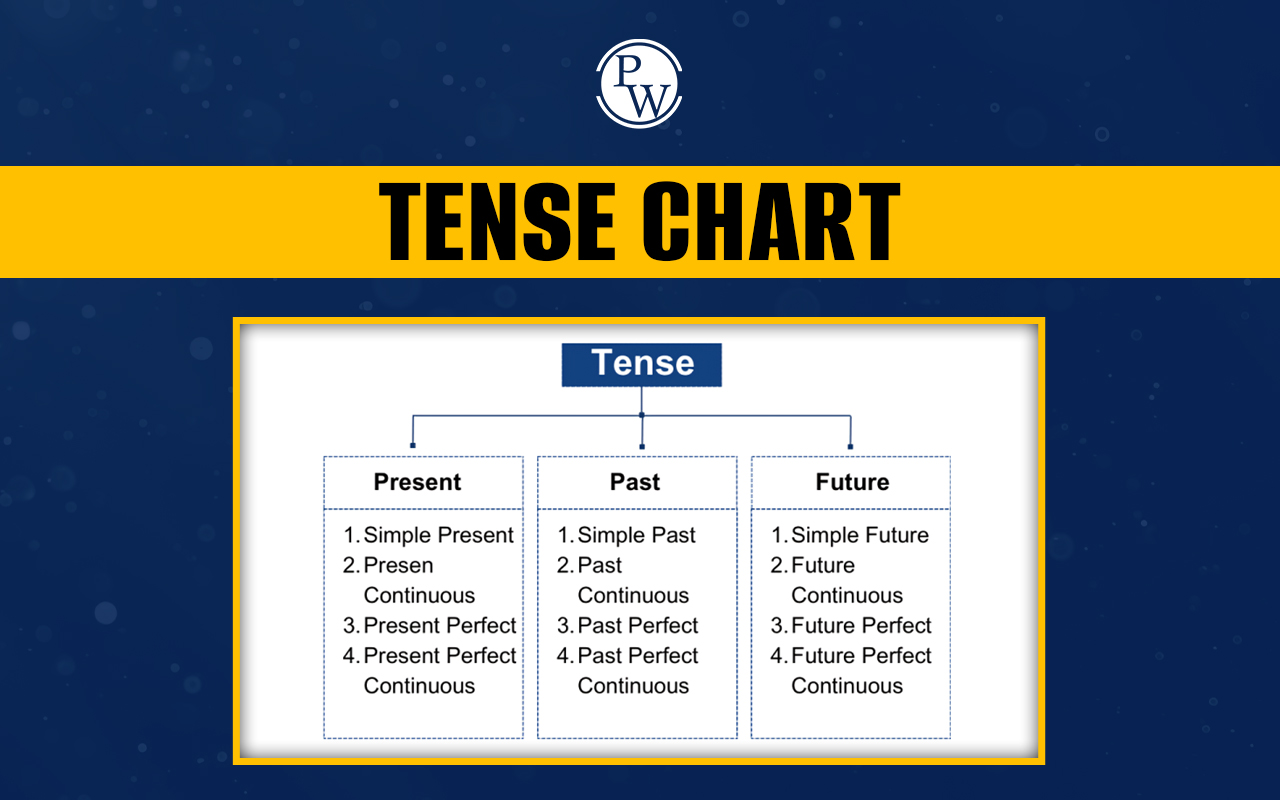
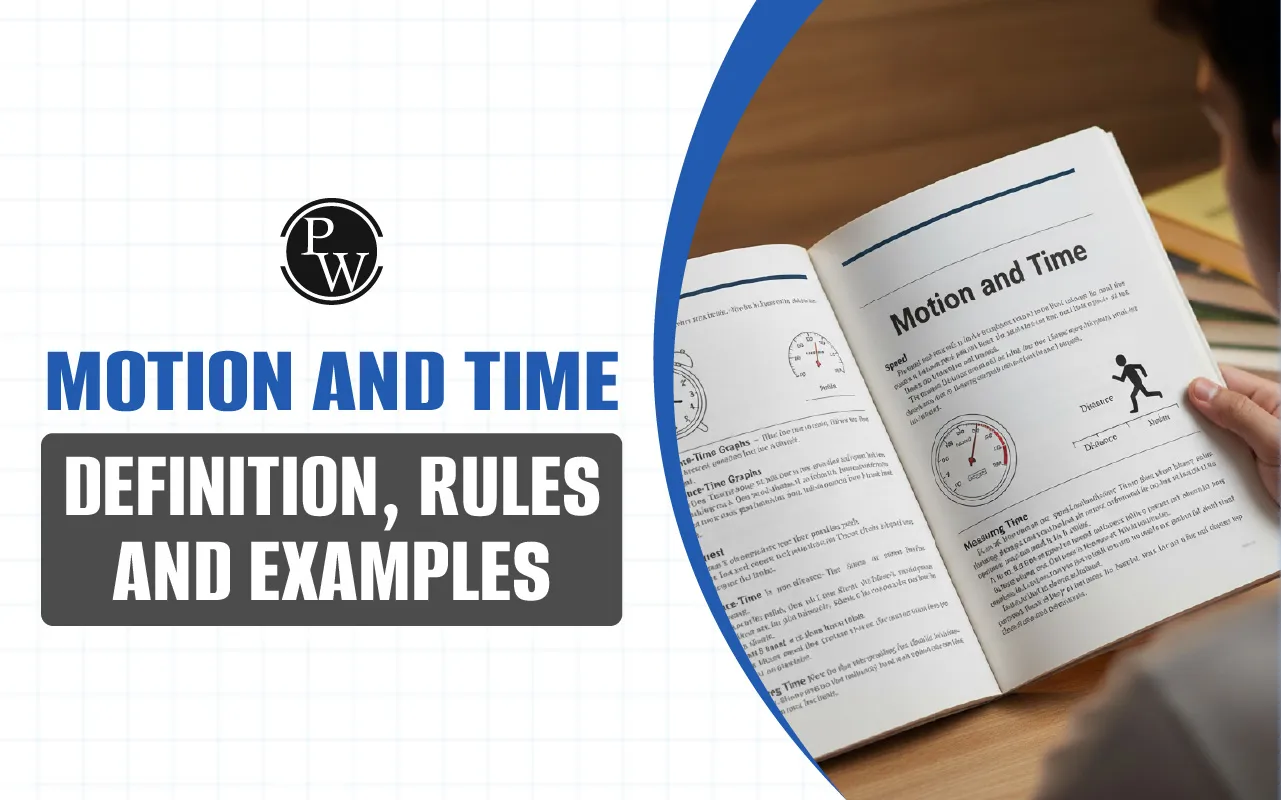
Motion and Time are two correlated concepts in Science (Physics). In our daily life, we see many examples of motion, like cars moving on the road, birds flying in the sky, or fish swimming in water. All these show motion because the objects are changing their position with time. In order to understand motion properly, we also need to measure time. That is why you always study motion and time together.
For example, if a bus is moving on the road, you also want to know how far it goes in one hour or how much time it takes to cover a specific distance. To better understand the relation between motion and time, it is important to know what both of these terms mean. So, keep reading to learn what motion is, its types, along motion and time.
Read more: Three States of Matter
Motion and Time Definition
Motion and time definition can be written as “Motion shows movement, while time tells the duration of that movement. Both motion and time are connected and help us study different physical activities in daily life.”
Let’s understand what motion is and its types in detail now.
What is Motion?
One common question you may find in exams is, What is Motion? Motion means the change in the position of any object when we observe it with respect to time. If an object keeps changing its place, like a train running on the track, a child walking in the playground, or the hands of a clock moving, then we say it is in motion.
But if the object does not change its position, like a parked car on the roadside or a chair placed in a corner of a room, it is said to be at rest. This explains that motion and rest are related to whether an object’s position changes or not. To understand motion more deeply, you also need to learn about distance and displacement.
-
Distance is the complete path covered by an object, while displacement is the shortest path between the starting point and the ending point. The formula we use to find distance is: Distance = Speed x Time.
-
For example, if a bike moves all around a park and finally comes back to the same place, the distance will be the full length of the path it travelled, but the displacement will be zero because the starting and ending positions are the same.
Read More: Force and Pressure
Types of Motion
When an object is in motion, it can move in different ways or directions. These movements are divided into different types of motion, as explained here:
1. Rectilinear Motion
When an object moves in a straight line without changing its direction, it is called rectilinear or translatory motion. For example, a truck moving on a straight road shows rectilinear motion.
2. Circular Motion
When an object moves along a circular path with a fixed radius, it is called circular motion. A common example is the rotation of the wheels of a bicycle or the motion of planets around the Sun.
3. Rotational Motion
In Rotational Motion, the object spins around a fixed axis. A spinning top or the blades of a fan are some examples of this type of motion.
4. Periodic or Oscillatory Motion
When the motion of an object repeats itself after equal intervals of time, it is called periodic or oscillatory motion. For example, the movement of a swing and the to-and-fro motion of a pendulum.
5. Uniform and Non-Uniform Motion
If an object moves in a straight line with the same speed, it is in uniform motion. For example, a bike moving at a constant speed on a highway. But if the speed keeps changing, it is non-uniform motion. For example, a car moving in a city during traffic.
Read More: What is Photosynthesis?
Example of Motion in Real Life
We see motion all around us in daily life. To understand this concept better, check the example of motion here.
-
Rectilinear Motion: A train moving on a straight railway track or a child sliding down a straight slide.
-
Circular Motion: A merry-go-round in a park or the motion of ceiling fan blades.
-
Rotational Motion: The Earth rotating around its own axis, or a rolling wheel turning around its center.
-
Periodic or Oscillatory Motion: A guitar string vibrating after being pulled, or a child swinging back and forth on a swing.
-
Uniform Motion: An airplane flying with the same speed in the sky or an escalator moving at a fixed speed.
-
Non-Uniform Motion: A cyclist riding on a hilly road or a person running in a race with slow and high speeds.
Motion Rules
The rules of motion can be understood by learning about Newton’s Laws of Motion, which tell us how objects move and how forces affect them. Let's understand the basic motion rules one by one:
Newton’s First Law of Motion (Law of Inertia):
According to the law of inertia, an object will stay at rest or keep moving in a straight line at the same speed until some external force stops or changes it.
-
For example, a football will only move if you kick it. Once kicked, it will keep rolling until friction or another force stops it.
-
The property of an object to resist changes in its motion is called inertia.
Newton’s Second Law of Motion:
This law explains how force, mass, and acceleration are related to each other. It states that the acceleration of an object depends on the force applied and its mass.
-
The formula is F = ma (Force = mass × acceleration).
-
For example, you can easily push a cart when it's empty, but when the cart is filled with goods, it will be harder for you to push because now the cart has more mass and will need more force to move.
Newton’s Third Law of Motion:
As per this law, for every action, there is an equal and opposite reaction. This means that if one object applies a force on another, the second object pushes back with the same force in the opposite direction.
-
For example, when you jump off a boat, the boat moves backward as you move forward.
These rules of motion are applied everywhere, from vehicles and machines to sports and even space travel. That’s why understanding them is very important not only for exams but also for understanding how things work in real life.
Read More: Separation of Substances
Time and Motion
Time and motion are connected to each other. Motion means a change in the position of an object, and this change can only be measured when time passes. Without time, we cannot measure motion. Time also helps us measure how fast or slow something is moving. For example, speed is calculated as the distance covered in a certain time, and velocity is the displacement in a certain time.
This explains that to understand motion, we always need to learn about time as well. Moreover, while solving questions based on motion and time, where we need to calculate the time, we use a formula:
Time = Distance Covered by the Object / Speed of the Object
Time and Speed
When studying motion and time in science, you also learn about time and speed as they go together. Speed tells us how fast or slow an object is moving, and it is measured by dividing the total distance travelled by the time taken. The unit of speed is usually written as metres per second (m/s) or kilometers per hour (km/h).
Speed = Distance Travelled / Time Taken
For example, if a car covers 60 kilometers in one hour, its speed is 60 km/h. By comparing distance and time, we get speed that helps us understand motion in a deeper way.
Also read: Work and Energy
Measurement of Time
We use time every single day to tell when something happens and how long it lasts. In Physics, time helps us understand motion and changes around us. The basic unit of time is the second (s), but in our daily lives we also use minutes (min) and hours (h).
-
To measure time, we use clocks and watches.
-
Earlier, for the measurement of time, people used natural methods like the shadow of the sun (sundial), the flow of water (water clocks), or the burning of candles to keep track of time.
-
Nowadays, we also use digital and mechanical clocks that give very accurate measurement of time.
-
In Physics, while learning Motion and Time, the term "time period" also comes up, which is a very important concept.
-
Time Period is the total time taken by an object to complete one full cycle of motion.
-
For example, the time taken by a simple pendulum to swing from one side to the other and come back is called its time period.
Hence, the measurement of time plays an important role in studying motion, speed, and many other physical activities in our daily lives.
Spark Your Child’s Curiosity in Science with CuriousJr
Does your child often find learning Science tough because of theories they cannot relate to or understand properly at school? Many parents see that kids just memorize for exams but don’t really understand what they are learning in Science.
CuriousJr’s Online Science Tuition Classes can make learning interactive and simple for your child after school.
-
Through real-life examples, hands-on explanations, and step-by-step teaching, children start loving science over time.
-
Each class is made to improve the understanding of learned topics, logical thinking, and the curiosity of your child.
-
Parents also get regular progress updates and PTMs, so you always know how your child is doing.
Support your child in exploring the wonders of science with CuriousJr. Book a demo class today and give them the extra after-school support they need to learn better and score well.

